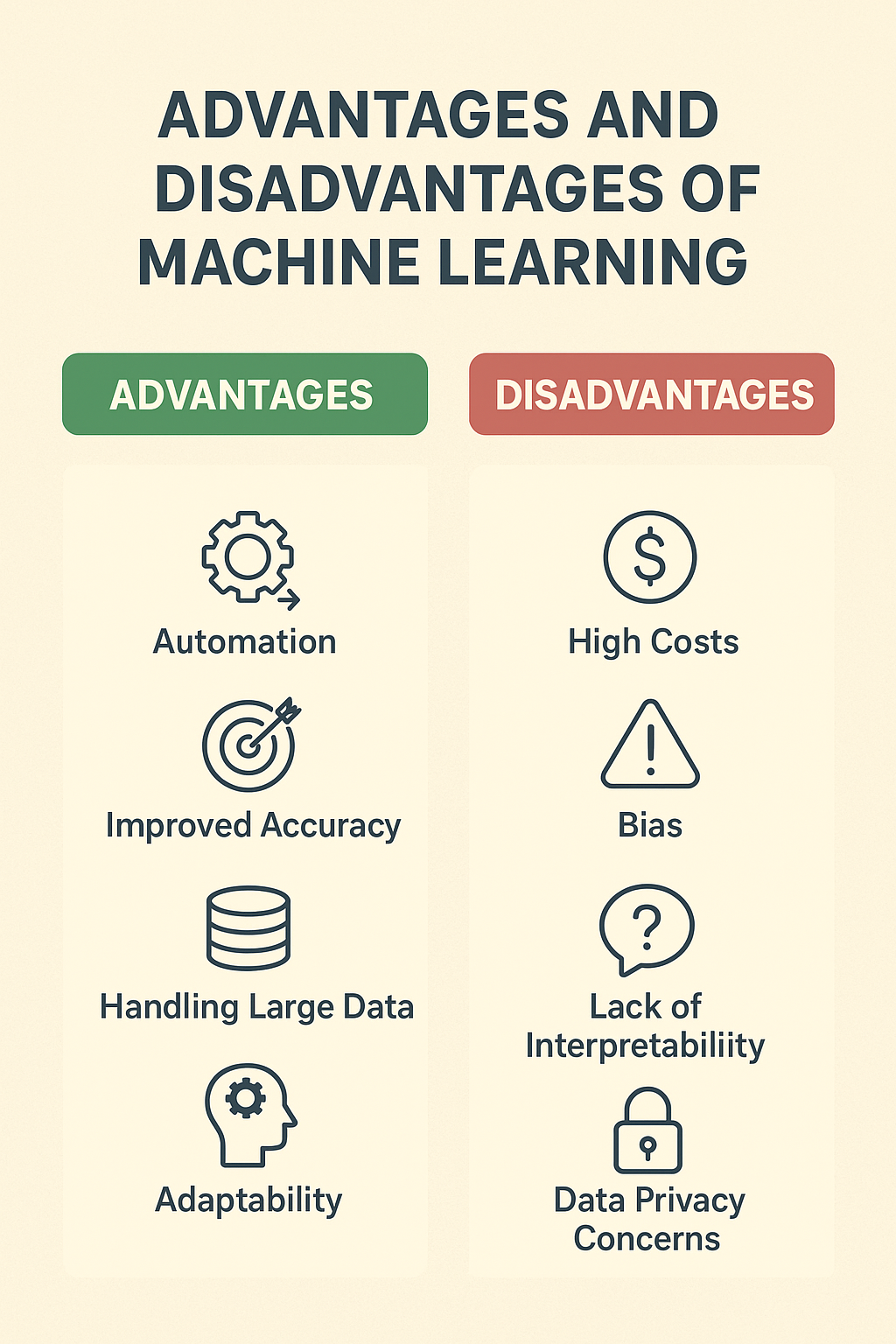Advantages and Disadvantages of Machine Learning

Machine learning (ML) has emerged as one of the most powerful technologies in today’s digital era. From powering recommendation systems on e-commerce platforms to enabling fraud detection in banking, machine learning is transforming industries worldwide. However, like every technology, it comes with both strengths and limitations. In this blog, we’ll explore the advantages of machine learning and disadvantages of machine learning, so you can better understand its impact on businesses and everyday life.
Advantages of Machine Learning
Machine learning provides businesses and individuals with numerous benefits. Here are the key advantages of machine learning:
1. Automation of Tasks
One of the biggest strengths of ML is its ability to automate repetitive tasks. Once trained, models can perform complex operations without constant human supervision.
2. Better Decision-Making
Machine learning algorithms analyze large volumes of data to deliver insights that support faster and more accurate decision-making.
3. Continuous Improvement
ML systems learn from data and improve over time, enhancing their performance without explicit reprogramming.
4. Handling Large Data Sets
Machine learning can process and analyze vast amounts of structured and unstructured data much faster than humans.
5. Wide Range of Applications
From healthcare and finance to retail and education, ML has diverse applications like fraud detection, recommendation engines, and predictive maintenance.
6. Personalized Experiences
Businesses can use ML to offer personalized product recommendations, targeted marketing campaigns, and customer-centric solutions.
Disadvantages of Machine Learning
While machine learning has many benefits, it also comes with some challenges. Here are the key disadvantages of machine learning:
1. High Cost of Implementation
Developing ML systems requires significant investment in infrastructure, skilled talent, and data resources.
2. Data Dependency
ML models rely heavily on the availability and quality of data. Poor-quality data can lead to inaccurate predictions and biased results.
3. Time-Consuming Process
Training machine learning models with large datasets can be time-intensive and computationally expensive.
4. Lack of Interpretability
Many ML models, especially deep learning, function as “black boxes,” making it hard to understand how decisions are made.
5. Risk of Overfitting
If not properly managed, ML models can overfit data, meaning they perform well on training data but poorly on new, unseen data.
6. Ethical and Security Concerns
Bias in training data can lead to unfair outcomes, while poorly secured models can become targets for cyberattacks.
Final Thoughts
Understanding the advantages and disadvantages of machine learning helps businesses and individuals adopt this technology wisely. While the advantages of machine learning, such as automation, scalability, and personalization, are undeniable, the disadvantages of machine learning like high cost, data dependency, and interpretability issues, cannot be overlooked.
Ultimately, success with ML depends on striking the right balance—leveraging its benefits while addressing its challenges with the right strategies and tools.
- Art
- Causes
- Crafts
- Dance
- Drinks
- Film
- Fitness
- Food
- Games
- Gardening
- Health
- Home
- Literature
- Music
- Networking
- Other
- Party
- Religion
- Shopping
- Sports
- Theater
- Wellness




